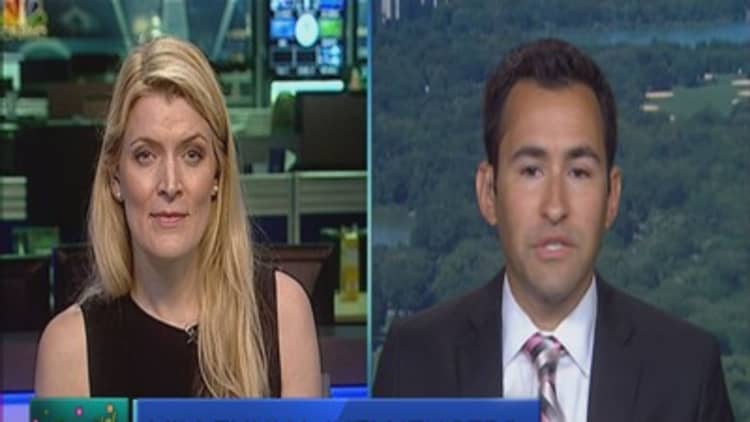


Retailers looking to boost their businesses should start heeding the demands of millennials, a report by investment research firm Bernstein suggests.
Millennials, the generation born between 1981 and 2000, will be the only section of society whose median income will grow over the next five years, with clothes spending expected to jump 20 percent, according to Bernstein. But in order to cash in, retailers need to focus on their online presence, and offer low-cost items—fast.
"When I look at trends in the retail sector, [and] who's been winning over the past few years, I think part of it is absolutely driven by the behavior of millennials, " Jamie Merriman , Sanford Bernstein's European General Retail Analyst, told CNBC Thursday.
And much of that behavior is online, Merriman explained. About 79 percent of millennials use social media like blogs, Facebook, Twitter, and Instagram, with many spending as much as 2-3 hours on these sites per day.
But it's not enough for companies to host a Facebook page or run a Twitter account and rack up their followers, Merriman said. Retailers need to engage with so-called "influencers" of the social media world, like prominent video bloggers, in an authentic way that will make Millennials feel like the recommendation is coming from their peers.
"I think you can see consumer reactions backfire if it's perceived as being bought," Merriman said.
Content sharing, through "selfies" and "outfit of the day" photos, are driving demand for fresh products, she added, and low-cost retailers like, H&M and Forever21 are growing as a result.
"I've done focus groups where women say to me, I have pictures on Facebook, I have pictures on Instagram: I don't want to wear the same thing again," Merriman said.
To gain millennial shoppers, retailers need to market clothing at affordable prices that support low-usage rates, or turn to products that can be worn many times in different ways, the report explains.
But luxury brands haven't been left in the cold entirely. Sarah Watson, Net-a-Porter's vice president of social commerce and co-founder of the company's social media platform Net Set, says millennials still appreciate high-fashion.
"What we're seeing on our own social network is that when people choose to invest in something like an amazing bag or gorgeous necklace or beautiful dress, actually they're very proud of it," Watson said.
"They want to show it off time and time again, rather than this kind of 'fast fashion' where they might just want a different outfit every day. So it's kind of a different mindset," she added.
Still, without an online or mobile presence, it'll be hard to take advantage of the trend. millennials already account for about 46 percent of online clothing purchases, which is much higher than their overall share of apparel sales, at around 32 percent in the U.K.
Bernstein has rated online-only retailer ASOS as outperform, with a target price of £44 ($68). Zara owner Inditex and Primark parent ABF are both rated as market perform, with price targets at 32 euros (£35) and £28 ($43) respectively.


